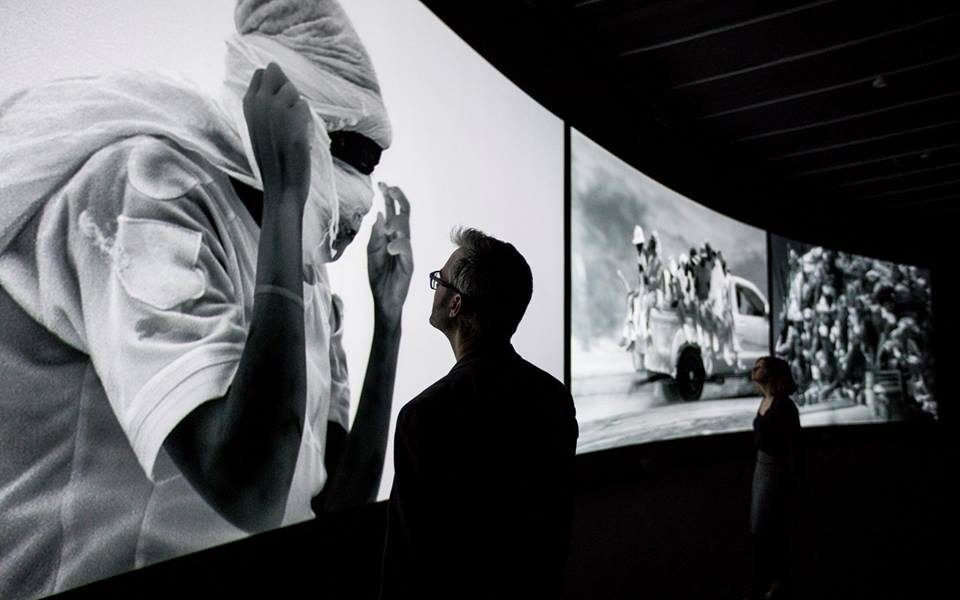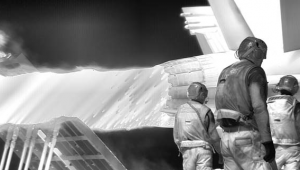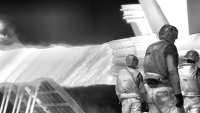Richard Mosse: Incoming at the Barbican

Incoming is the new video art installation at the Barbican’s Curve. Challenging the boundaries between art and documentary, the work is the result of a collaboration between the Irish conceptual documentary photographer and Deutsche Börse photography Prize Winner Richard Mosse with composer Ben Frost and cinematographer Trevor Tweeten.
Filling the (literally curved) cavernous space in the brutalist-era arts centre with three eight metre-wide screens, the immersive artwork studies human figures and scenes from across the Middle East, North Africa and Europe via images uniquely captured on a powerful telephoto military camera, to cast the recent migration and displacement crisis in an entirely new light.
The thermal camera, which can detect the human body from a distance of more than 30km, is a counter-intuitive choice to interrogate a human subject, reducing all that falls under its gaze to a series of heat markings in a monochrome palette. But the dehumanising effect is searingly pertinent. The deeply personal, often tragic narratives the film reveals a glimpse of – women, children, young men struggling against the elements in makeshift camps, drowning at sea, crossing dangerous waters – are displayed in a stark, clinical, ambivalent manner, accompanied only by harsh, electronic sounds that do nothing to soften the images. Individuating details, such as skin colour, and context are entirely removed, with only the heat emanating from a person visible. Armour and helmet-clad police and army forces take on a sinister form, their reflective visors resisting the camera’s gaze. The sheer size of the screens, which curve around the viewer, simultaneously displaying disparate angles and scenes, creates a sense of being engulfed and disorientated within the otherworldly films.
There is a default disconnection between the viewer and subject, an evocative reflection of the disconnection caused by considering a humanitarian crisis in terms of numbers, borders and control in government policy and media. This overall effect is then contrasted by intensely human moments: a young girl making a heart shape with her hands to the camera and laughing with her friends; a sole man praying, oblivious to being watched; dozens of people gripping onto one another piled high on a sack-loaded truck. Speaking of the work, Mosse said: “I am European. I am complicit. I wanted to foreground this perspective in a way, to try to see refugees and illegal immigrants as our governments see them…the medium anonymises the subject in ways that are both insidious and humane.”
The medium is certainly abstract and a brief look may not deliver its intended impact. It demands that its viewer slow down and absorb the visual and auditory experience that, over time, allows more and more to be revealed by the traces of human suffering it displays. The lasting effect is that one is immersed in the “complicity” Mosse refers to, of watching with ambivalence, at a distance, through a surreal lens the very real, very immediate and very human battles for survival unfold without any means to intervene.
Sarah Bradbury
Photo: Barbican Facebook
Richard Mosse: Incoming is at the Barbican from 15th February until 23rd April 2017, for further information visit here.
For further information about Richard Mosse visit here.





















Facebook
Twitter
Instagram
YouTube
RSS